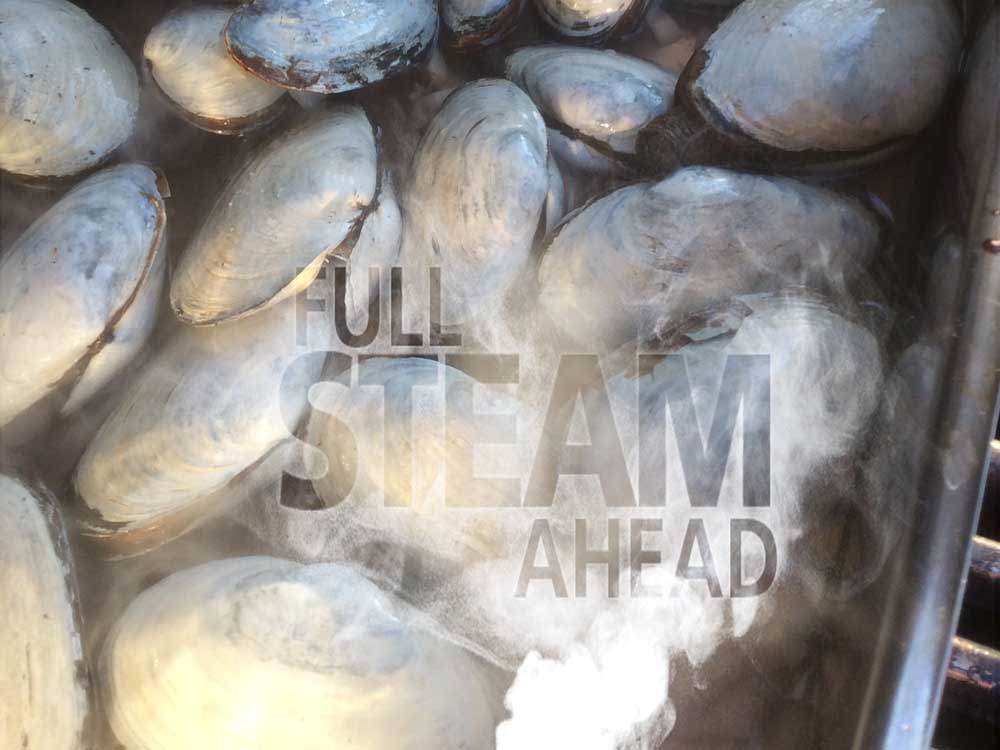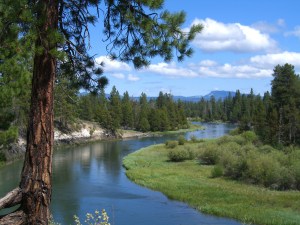Steamer clams can be a party favorite
Published 12:00 am Tuesday, April 5, 2016

- Jan Roberts-Dominguez / For The BulletinIt’s a simple way to entertain a group of friends: a roasting pan full of succulent Pacific Northwest clams, steamed in a bath of wine, garlic, and butter until they open up and release their flavorful juices.
At a recent gathering, our main appetizer was a feast of freshly steamed soft-shell clams that had been dwelling in the Yaquina estuary near Newport a mere 24 hours earlier.
The canny clammer, our friend Paul, had pulled them from the briny depths himself, tumbled them into a bucket filled with fresh seawater, then tended to them throughout the day, changing the water frequently as the clams purged themselves of their sandy grit.
Trending
Before the event was in full swing, Paul and I readied the clams for steaming. We strained off the seawater and gave them a good rinse. Then Paul sorted them to make sure we were only going to steam the live ones. In truth, there were no casualties. But the way to tell is to give each open clam a nudge, and if it doesn’t close — or at least nudge back — chuck it.
While he arranged them in a large roasting pan, I sliced some lemons and garlic, which we added to the clams, along with enough pinot gris to produce a healthy head of steam in the pan without drowning the clams. Covered in foil, the pan was placed inside our gas grill, which had been preheated to about 400 degrees. You could also just stick them in the oven, explained Paul, but ours was already taken.
Once the wine came to a boil, we closed the lid and let the steamy goodness of that flavorful liquid work its magic. After only about 15 minutes, we checked the progress and saw the clams had opened, a sign that they are done.
While Paul gently transferred the clams to a bowl, I poured the juices from the pan into a pot and simmered it until it had reduced by about half, which concentrated the flavors, making it a most succulent dipping sauce. For a second dipping option, Paul had melted some butter and skimmed off the foam to produce a golden sauce.
From there it was only a matter of standing back and letting the group move in to enjoy one of the Pacific Northwest’s greatest treasures.
I seem to gravitate toward this style of eating throughout the winter into the spring months. Indeed, this is a great time of year to invite a few folks over and gather around a bowl of freshly cooked steamer clams. It’s good eating at its friendliest, a straightforward culinary event requiring nothing more than hearty appetites and a generous supply of great-quality, crusty bread to sop up the flavorful juices in the bowl.
Trending
If you aren’t lucky enough to have a personal clammer in your group, the clams to look for in the seafood case at your favorite market are the so-called “steamer” clams. That’s actually how you’ll find them labeled in most fish markets.
Here in the Pacific Northwest, the clams you’re most likely to encounter within this category are the native littleneck clam, the butter clam and the Manila clam.
But don’t get too wrapped up with the idea of having to know what kind of clams you’re purchasing, because chances are your shellfish provider won’t be able to tell you. They should know where they come from, though, which in many cases will be Washington, since there’s a thriving commercial clamming industry going on up there.
Now, for Steamer Clams 101, here’s all you need to know to get started:
You’re dealing with a live organism. And you want them to be that way right up until you cook them. So, before cooking, discard any clams that aren’t closed (or don’t close when you nudge or tap them on their shell). After cooking, discard any clams that didn’t open during cooking.
It’s that simple. Really.
In between those two activities, all you’re doing is exposing some fresh and succulent bivalves to a bit of flavored liquid and heating them until they open up. Throw that pot of cooked-up steamers into the center of a people-lined dinner table, and discover just how easy it is to please a group of friends.
What you cook your clams in is really up to you. To get launched, I highly recommend trying the straightforward approach I described above, which is fairly classic: wine, garlic, lemon and a little bit of seasoning.
But variations abound, so don’t be shy; create your own specialty of the house. From extra-garlicky to smoky-hot chipotle chilies, the outcome can be anything from subtle to fiery.
— Jan Roberts-Dominguez is a Corvallis food writer, artist and author of “Oregon Hazelnut Country, the Food, the Drink, the Spirit” and four other cookbooks. Readers can contact her by email at janrd@proaxis.com or obtain additional recipes and food tips on her blog at www.janrd.com.








